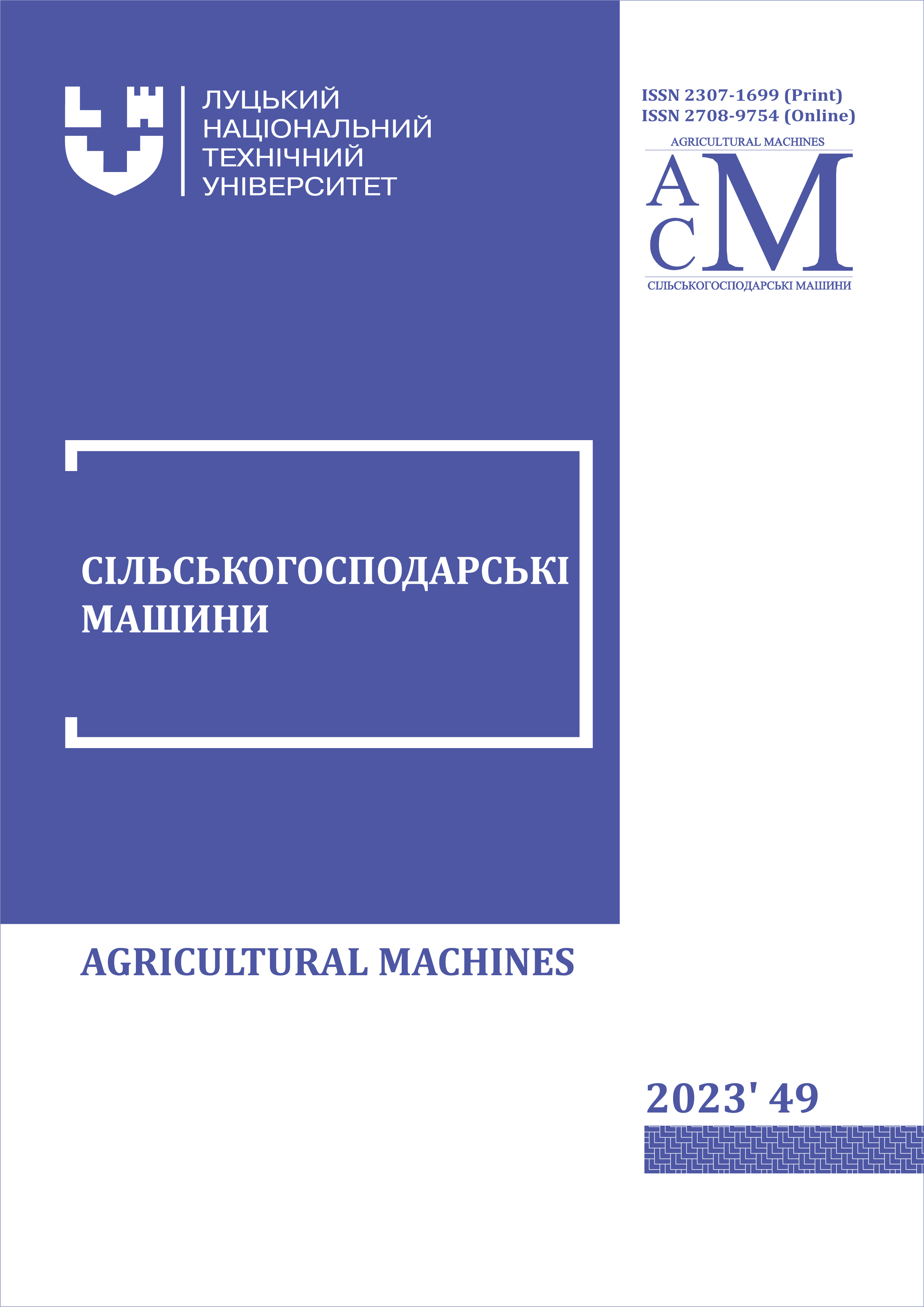MODELING OF OIL CROP SEED DRYING
Abstract
The agricultural sector of the economy increases the production of oil crops. Demand for vegetable oils is growing worldwide. Prices of oil crops are comparatively higher than for grain crops. Despite the increase in production costs, the profitability of the cultivation of oil crops determines the growth trend in their production and processing volumes. The processing industry is one of the main and largest users of oilseeds. In Ukraine, the main oil crops are sunflower, soybean and rapeseed, and linseed. In Ukraine, including the region of Western Polissya, more and more attention is paid to the cultivation of linseed. The main value of linseed is in the seed, so it is important to obtain high quality seeds when growing this crop. Weather conditions can cause increased crop moisture. Excessive seed moisture content during storage has a very negative effect on seed quality, leading to deterioration and, as a result, significant losses at the stage of post-harvest processing and storage, which leads to the need for artificial drying. The purpose of the study is to substantiate the most rational drying regimes of linseed by modeling drying process, ensuring high productivity and quality of the seeds, avoiding undesirable excessive energy costs. Experimental studies were carried out using the developed experimental equipment. For the study, linseed of the variety «Southern Night», which was obtained by harvesting in a single-phase method, was used. Then, linseed was cleaned. The initial moisture content of linseed was 14.3%. Linseed drying was carried out at drying agent temperatures of 35, 45, 55 and 65°C. The air flow rate in the drying chamber was 1.9–2.0 m/s and the thickness of the linseed layer was 2 cm. A drying process models of bulk materials are summarized in the article. The coefficients of the drying process models were obtained as a result of a non-linear regression analysis carried out using SPSS 17.0 software. The accuracy of drying process models and their comparison was assessed. The obtained mathematical model of the linseed drying process takes into account the following parameters: type of drying, interaction of the seed with the drying agent, moisture content of the seed layer.
References
Cihan, A., Kahveci, K., & Hacıhafızoğlu, O. (2007). Modelling of intermittent drying of thin layer rough rice. Journal of Food Engineering, 79(1), 293-298. http://doi.org/10.1016/j.jfoodeng.2006.01.057
Didukh, V. F. (2002). Increasing the efficiency of drying agricultural materials (Підвищення ефективності сушіння сільськогосподарських матеріалів). Lutsk: RVV LDTU. (in Ukrainian)
Didukh, V. F., Dudarev, І. М., & Kirchuk, R. V. (2008). Harvesting and primary processing of fibre flax (Збирання та первинна переробка льону-довгунця). Lutsk: RVV LNTU. (in Ukrainian)
Didukh, V., Kirchuk, R., & Yaschuk, A. (2013). Modeling of motion of material on the surface of spiral activator in bulk materials dryer. TEKA. Commission of Motorization and Power Industry in Agriculture, 15(4), 140-146.
Doymaz, I., & Pala, M. (2003). The thin-layer drying characteristics of corn. Journal of Food Engineering, 60, 125-130. http://dx.doi.org/10.1016/S0260-8774(03)00025-6
Dudarev, I., & Kirchuk, R. (2011). Reasoning of technology and design parameters of oil flax harvesting machines. INMATEH – Agricultural engineering, 33(1), 37-42.
Mujumdar, A. S. (2006). Handbook of industrial drying. CRC Press.
Rafiee, Sh., Keyhani, A., Sharifi, M., Jafari, A., Mobli, H., & Tabatabaeefar, A. (2009). Thin layer drying properties of soybean (Viliamz Cultivar). Journal of Agricultural Science and Technology, 11, 289-300.
Yadollahinia, A. R., Omid, M., & Rafiee, S. (2008). Design and fabrication of experimental dryer for studying agricultural products. International Journal of Agriculture & Biology, 10, 61-65.
Yaschuk, А. А., & Kirchuk, R. V. (2011). Study of the drying kinetics of linseed with development of the dryer design (Дослідження кінетики сушіння насіння льону олійного з розробкою конструкції сушарки). Design, Production and Exploitation of Agricultural Machines, 41(1), 309-314. (in Ukrainian)
Yaschuk, A., Kirchuk, R., & Dudarev, I. (2013). Research of the process of aeration of a layer of bulk material. INMATEH – Agricultural engineering, 40(2), 73-79.











